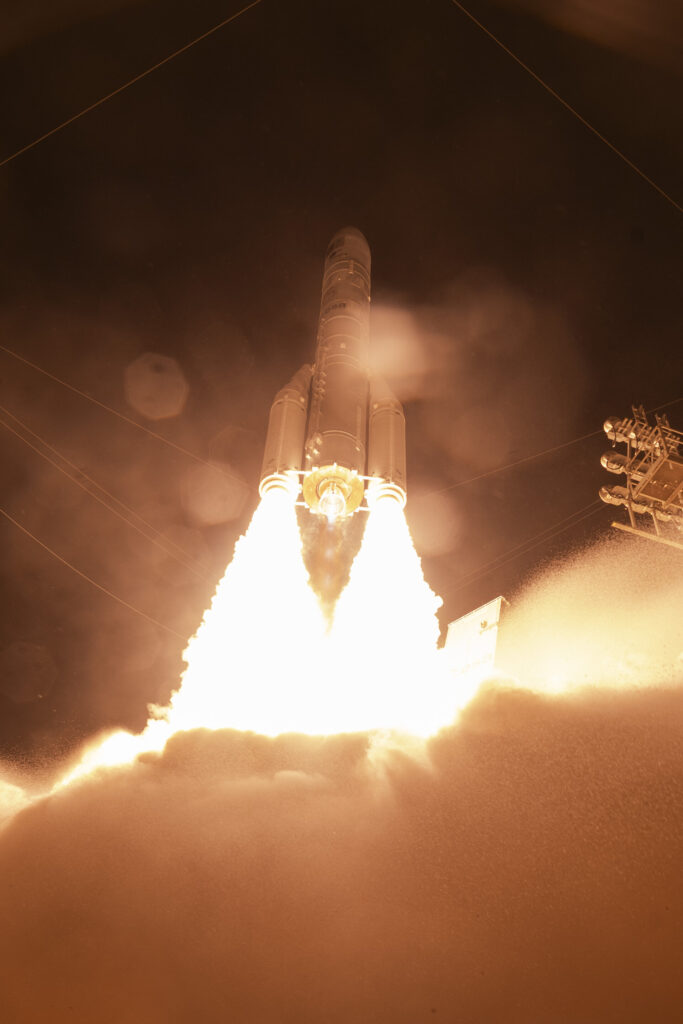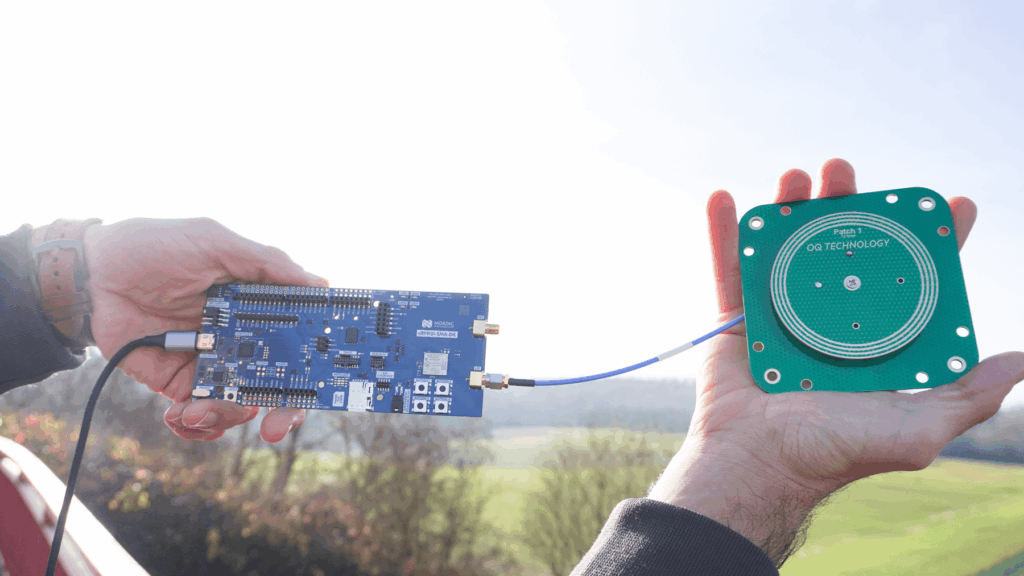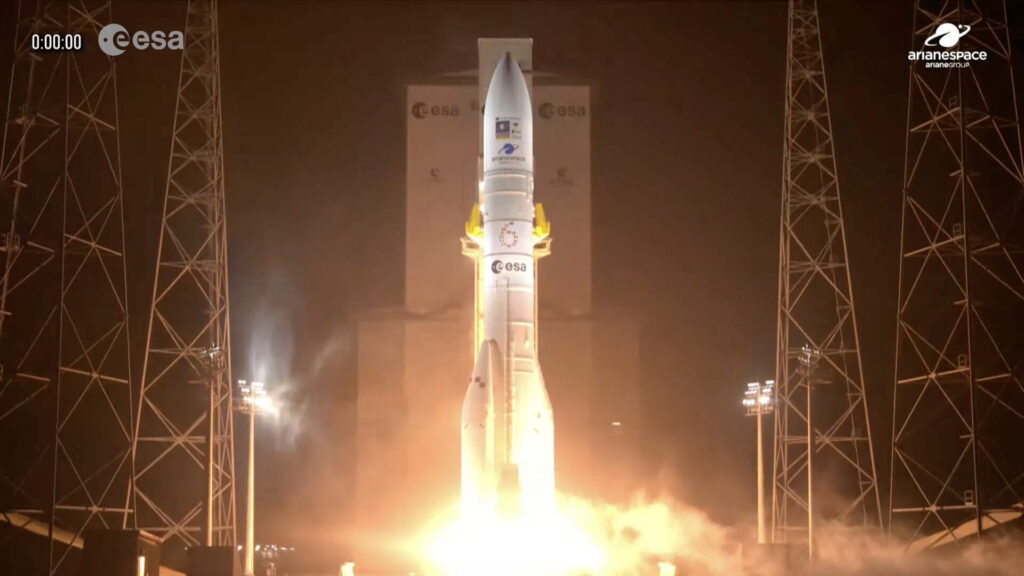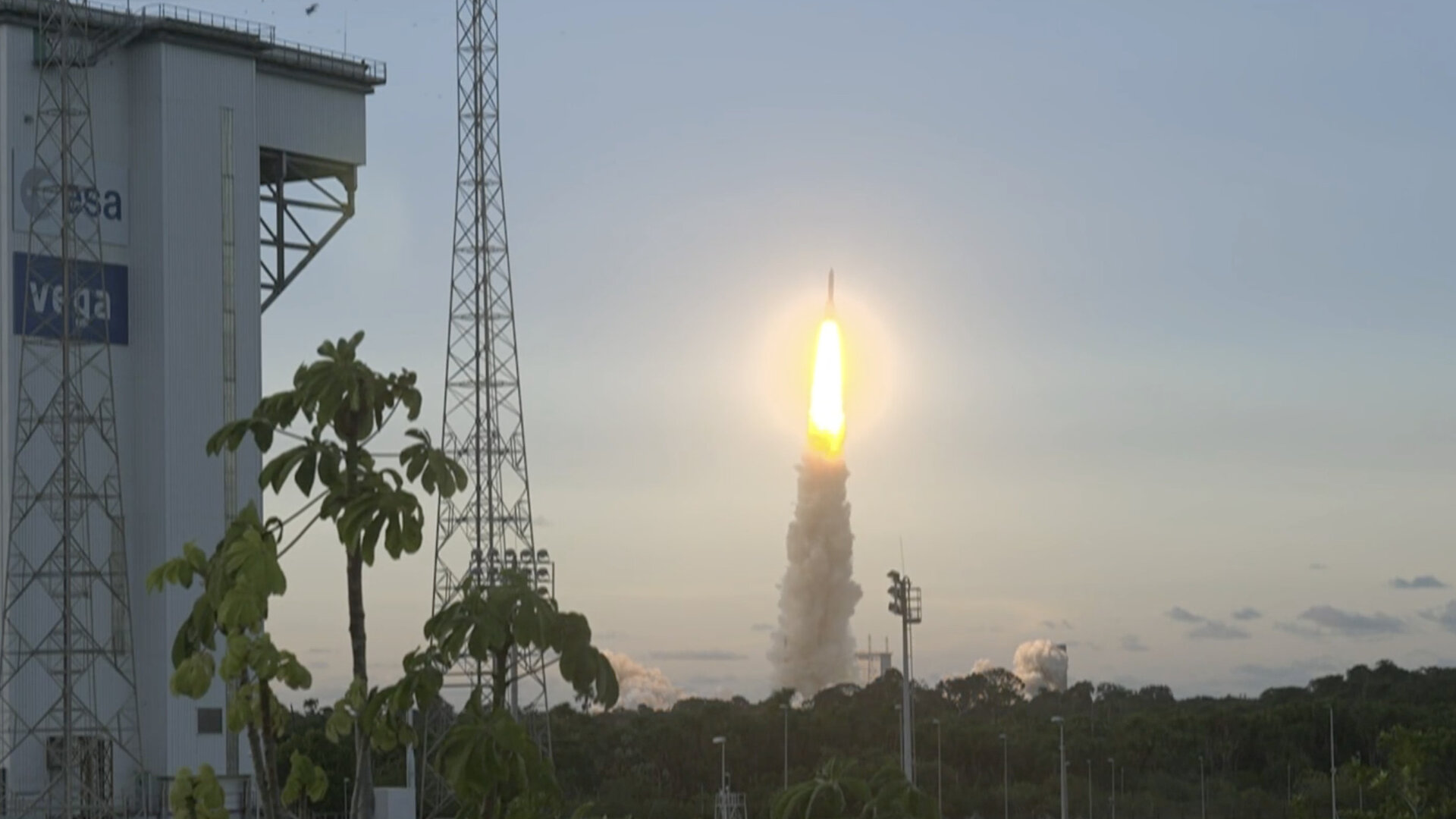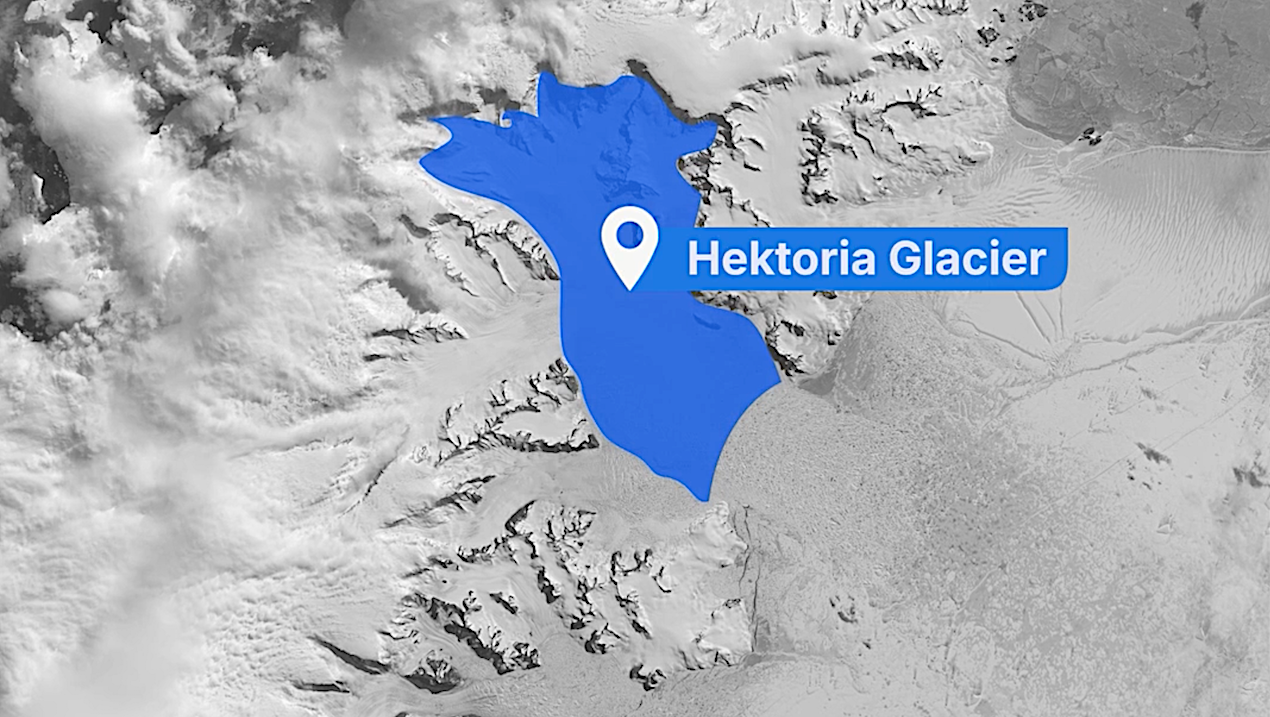Now Reading: Ariane 6 launches Sentinel-1D radar imaging satellite
-
01
Ariane 6 launches Sentinel-1D radar imaging satellite
Ariane 6 launches Sentinel-1D radar imaging satellite
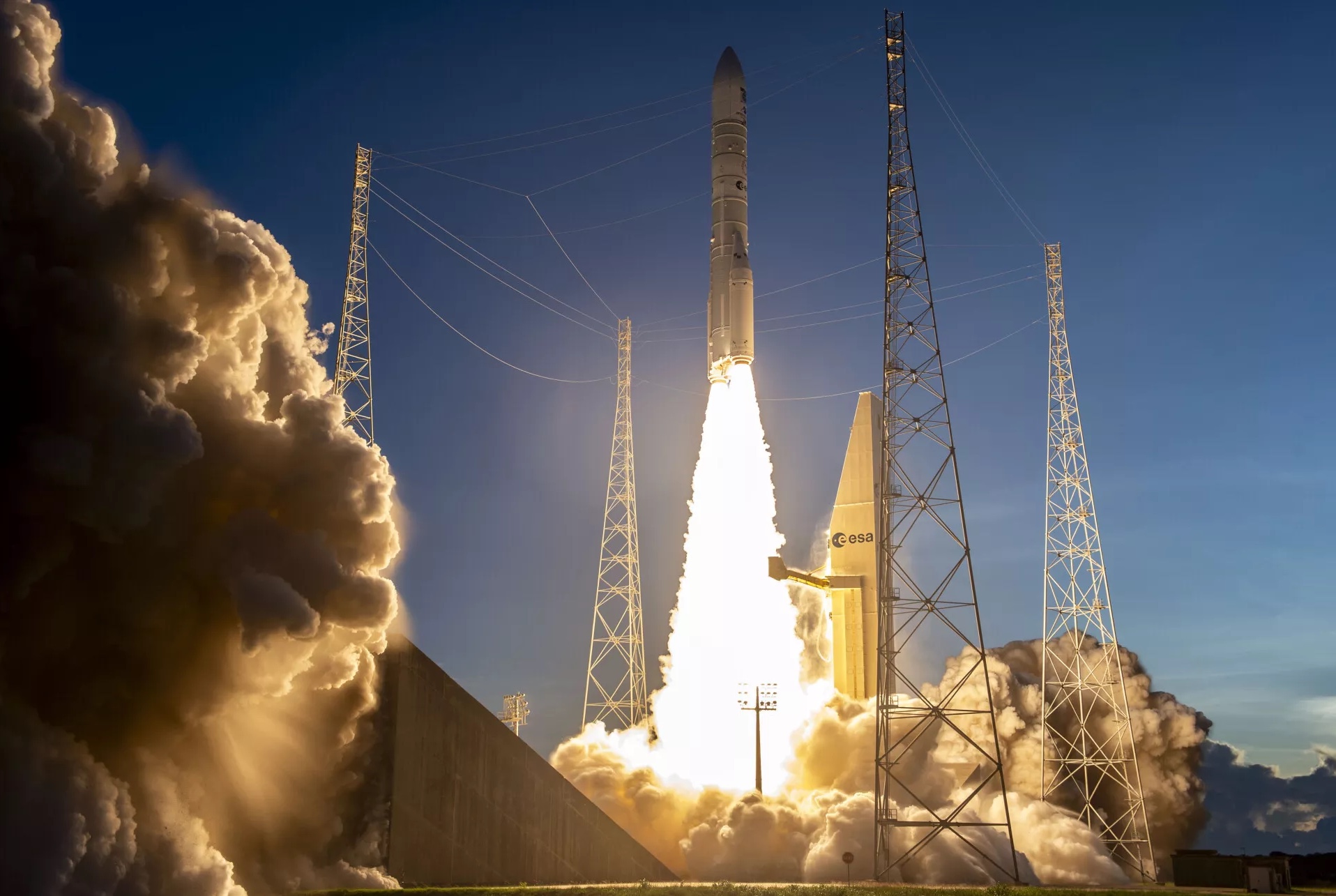

WASHINGTON — An Ariane 6 successfully launched a radar imaging satellite Nov. 4 after European agencies chose to use a larger rocket to ensure an earlier launch.
The Ariane 6 lifted off from the European spaceport in Kourou, French Guiana, at 4:02 p.m. Eastern. The payload, Sentinel-1D, separated from the upper stage 33½ minutes after liftoff.
Sentinel-1D, a 2,184-kilogram satellite built by Thales Alenia Space for the European Space Agency (ESA) and the European Commission’s Copernicus program, operates in a sun-synchronous orbit at 693 kilometers. It carries a C-band synthetic aperture radar and an Automatic Identification System (AIS) payload.
Like earlier Sentinel-1 satellites, Sentinel-1D will be used for Earth observation applications such as agriculture, flood monitoring and tracking ground motion, said Mauro Facchini, head of the Copernicus unit in DEFIS, the European Commission directorate responsible for space, during an Oct. 30 briefing.
The AIS payload detects ships and compares that data with radar imagery. “You can compare and combine the data,” Facchini said, allowing analysts to “check those vessels that are not transmitting,” such as ships involved in smuggling or piracy.
Sentinel-1D replaces Sentinel-1A, which remains in operation more than 11 years after its launch but is showing signs of degradation, particularly in its propulsion system.
“It’s still working well, but in a degraded mode,” said Simonetta Cheli, ESA’s director of Earth observation, at the briefing. “We cannot take the risk, and that’s why we tried to launch 1D as fast as possible.”
Pierre Potin, head of ESA’s Copernicus Space Office, said that because of those propulsion concerns, ESA plans to begin lowering Sentinel-1A’s orbit once Sentinel-1D is commissioned. He said doing so is a requirement of a “responsible space agency” to ensure the satellite reenters within 25 years after the end of its mission.
Sentinel-1D joins Sentinel-1C, a similar radar imaging satellite launched last December on a Vega C rocket, marking that vehicle’s return to flight after a December 2022 launch failure.
ESA announced in January that it had signed a contract with Arianespace to launch Sentinel-1D on Ariane 6 but did not specify at the time why it was not flying on another Vega C.
At the Oct. 30 briefing, officials said Ariane 6 offered a faster path to orbit than Vega C. “We need to make sure that 1D is up and running as fast as possible, and this was really the reason why we were looking at best timing and the most urgent option,” Cheli said.
While ESA and other European agencies have in recent years launched some satellites on SpaceX’s Falcon 9, they chose not to in this case. “We needed to find the best European vehicles to launch these satellites as soon as possible,” Facchini said, referring to both Sentinel-1C and -1D. “We are trying to launch as much as possible with European vehicles.”
“Ariane 6 was the launcher able to launch Sentinel-1D at the requested slot by the customer,” said Caroline Arnoux, senior vice president and head of the Ariane 6 business unit at Arianespace. “So it was the best launcher for this mission.”
This was the third Ariane 6 launch this year and the fourth overall. One more Ariane 6 mission is scheduled for later this year, carrying two Galileo navigation satellites.
All Ariane 6 missions to date have used the Ariane 62 configuration, which has two solid-rocket boosters. The first flight of the Ariane 64, with four boosters, was expected this year, but Arianespace said Oct. 16 that it has been delayed to early 2026.
Stay Informed With the Latest & Most Important News
Previous Post
Next Post
-
 012024 in Review: Highlights from NASA in Silicon Valley
012024 in Review: Highlights from NASA in Silicon Valley -
 02Panasonic Leica Summilux DG 15mm f/1.7 ASPH review
02Panasonic Leica Summilux DG 15mm f/1.7 ASPH review -
 03From Polymerization-Enabled Folding and Assembly to Chemical Evolution: Key Processes for Emergence of Functional Polymers in the Origin of Life
03From Polymerization-Enabled Folding and Assembly to Chemical Evolution: Key Processes for Emergence of Functional Polymers in the Origin of Life -
 04How New NASA, India Earth Satellite NISAR Will See Earth
04How New NASA, India Earth Satellite NISAR Will See Earth -
 05And Thus Begins A New Year For Life On Earth
05And Thus Begins A New Year For Life On Earth -
 06Astronomy Activation Ambassadors: A New Era
06Astronomy Activation Ambassadors: A New Era -
07SpaceX launch surge helps set new global launch record in 2024












